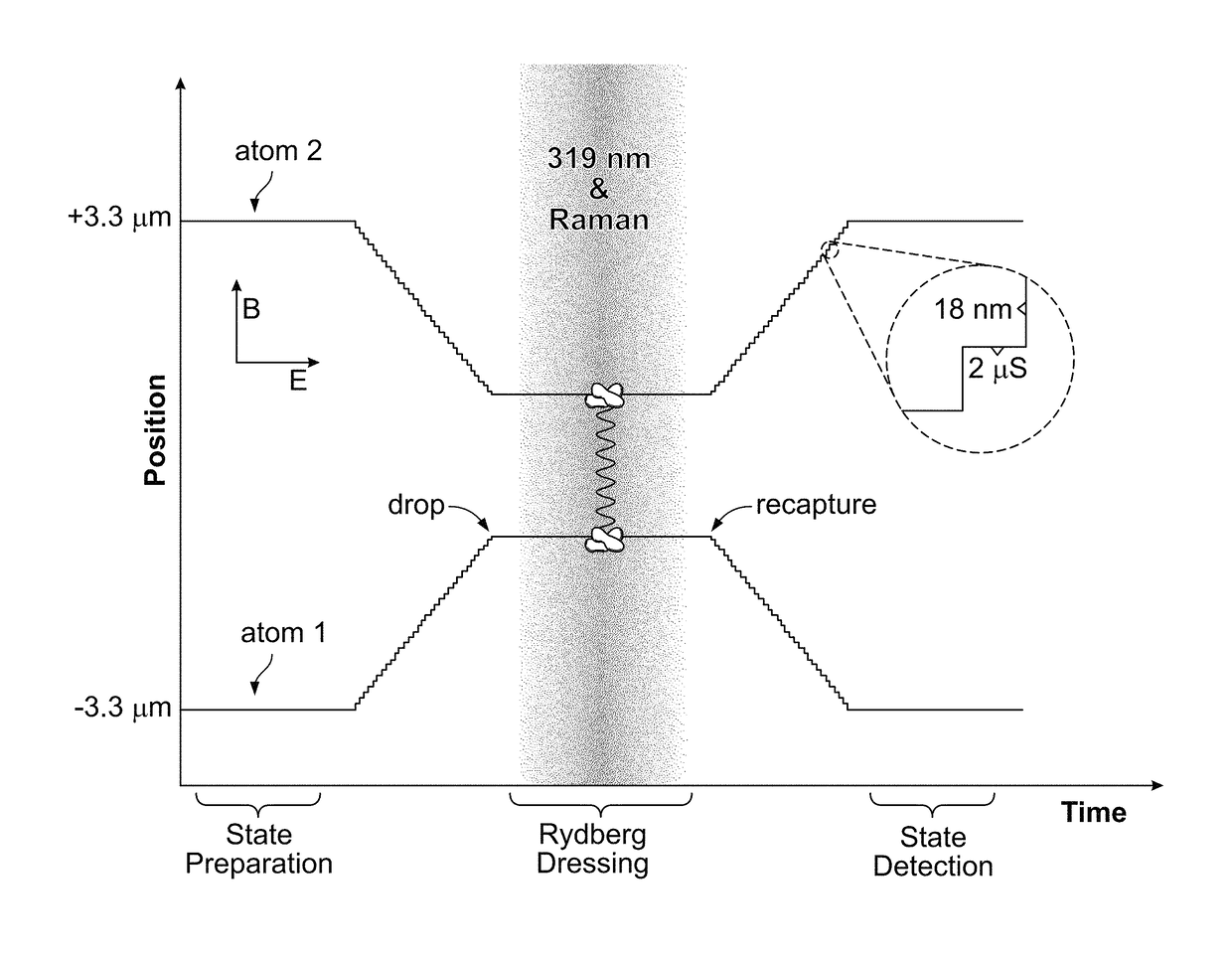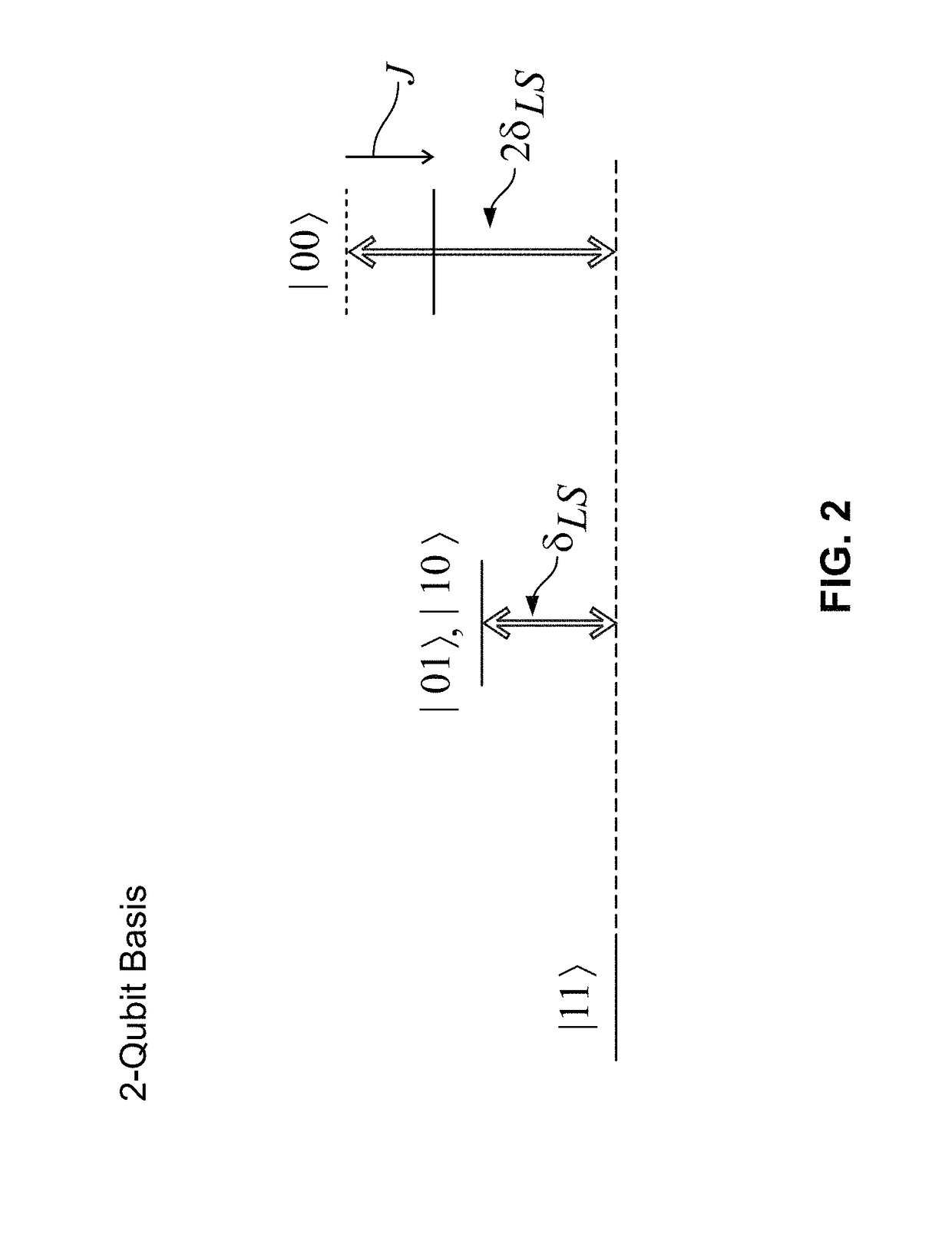Method and apparatus for quantum information processing using entangled neutral-atom qubits
a technology of neutral atoms and quantum information, applied in the field of methods and systems of quantum information processing, can solve the problems of difficult to maintain the required phase coherence and elusive experimental demonstrations, and achieve the effect of efficient generation
- Summary
- Abstract
- Description
- Claims
- Application Information
AI Technical Summary
Benefits of technology
Problems solved by technology
Method used
Image
Examples
example
[0101
[0102]Apparatus as described above was used.
[0103]By polarization gradient cooling, the atom temperature was reduced to about 20 μK. A bias field at 4.8 G was then turned on to define a quantization axis, and we optically pumped the atoms into the state |6S1 / 2, F=4,mF=0>, i.e. our logical basis state |0>, using a π-polarized laser at 895 nm tuned to the |6S1 / 2, F=4>→|6P1 / 2, F=4> transition and a repump laser at 852 nm tuned to the |6S1 / 2, F=3→|6P3 / 2, F=4 transition. The state preparation efficiency was about 95%, limited by the stray, fictitious magnetic field produced by vector light shifts from the dipole-trap laser.
[0104]We applied a two-photon Raman laser field to perform a global π rotation to bring the atoms from |0, 0 to |1, 1. The stimulated Raman transition uses the carrier and one sideband from a laser tuned 50-GHz red of the cesium-133 D2 line (6S1 / 2→6P3 / 2) and modulated via a fiber-based EOM.
[0105]To Rydberg-dress the atoms with a strong EDDI, we dynamically transla...
PUM
 Login to View More
Login to View More Abstract
Description
Claims
Application Information
 Login to View More
Login to View More - R&D
- Intellectual Property
- Life Sciences
- Materials
- Tech Scout
- Unparalleled Data Quality
- Higher Quality Content
- 60% Fewer Hallucinations
Browse by: Latest US Patents, China's latest patents, Technical Efficacy Thesaurus, Application Domain, Technology Topic, Popular Technical Reports.
© 2025 PatSnap. All rights reserved.Legal|Privacy policy|Modern Slavery Act Transparency Statement|Sitemap|About US| Contact US: help@patsnap.com



